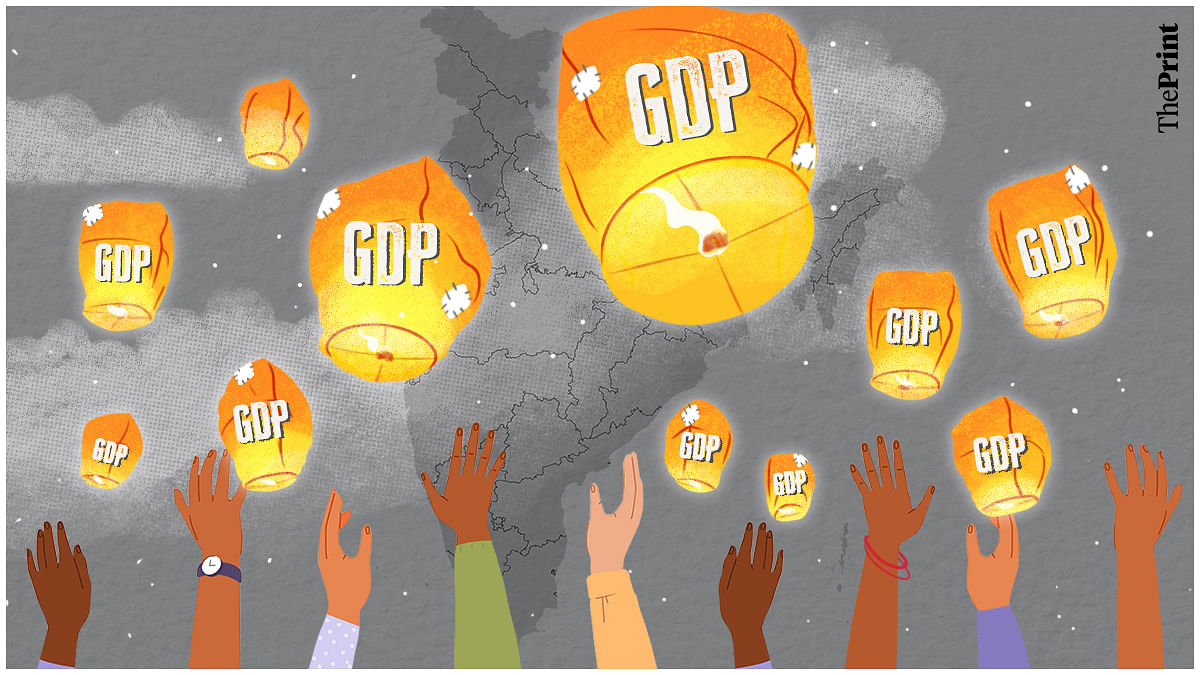New Delhi: At a time when the global economy is set to see a “protracted period of low growth”, India remains a bright spot, not only retaining its position as the fastest-growing large economy but also bucking global trends of contracting manufacturing activity and investment slowdowns, according to a new United Nations report.
The UN World Economic Situation and Prospects 2024 report, released Friday, said that lingering risks and uncertainties surrounding the Russia-Ukraine war, the conflict in Palestine, and the decisions of several developed economies to keep interest rates higher for longer have resulted in a lower forecast for global GDP growth, to an estimated 2.4 percent in 2024 from 2.7 percent in 2023.
The report also had a dim prognosis for the next few years.
“Growth is forecast to improve moderately to 2.7 percent in 2025 but will remain below the pre-pandemic trend growth rate of 3 percent,” the report said.
“While the world economy avoided the worst-case scenario of a recession in 2023, a protracted period of low growth looms large,” it added.
On the other hand, while global growth overall is set to decelerate, a look at South Asia shows that the region will do much better than the global average, propelled by India’s economy.
“Gross domestic product in South Asia grew by an estimated 5.3 percent in 2023 and is projected to increase by 5.2 percent in 2024, driven by a robust expansion in India, which remains the fastest-growing large economy in the world,” the report noted.
According to the UN’s analysis, growth in India is projected to hit 6.2 percent in 2024 — only marginally lower than its 6.3 percent estimate for 2023 — due to “robust domestic demand and strong growth in the manufacturing and services sectors”.
Also Read: Struggling growth, stark dependence on Israel — how Palestine’s economy looked before latest conflict
India’s strong investment & industrial performance
Global levels of real gross fixed capital formation — a measure of investment activity — grew by about 1.9 percent in 2023, down from 3.3 percent in 2022 and far below the average growth rate of 4.0 percent during 2011-2019, the report highlighted.
“Both developed and developing economies experienced a slowdown in investment growth even before the pandemic,” it noted, adding that investment prospects in China currently face challenges due to a struggling property sector.
However, the report did note that government-led infrastructure investments are partially offsetting the decline in private investments.
“In contrast, India registered strong investment performance in 2023, driven by government infrastructure projects and multinational investments,” the report said.
Further, the analysis pointed out that India is benefiting from “growing interest from multinationals,” which see the country as a “key alternative manufacturing base” as part of the overall strategies of developed economies to diversify their supply chains.
“In 2022, FDI (foreign direct investment) flows to India rose by 10 percent, making it the third largest host country for announced greenfield projects,” the report noted.
“Another driver of fixed capital formation in the country is the increased government spending on roads, railways, and renewable energy projects, which can have a crowd-in effect on private sector investment,” it added.
Apart from investments, the UN report also noted that India went against the global trend of weak industrial production, instead seeing an expansion in activity.
“Global merchandise trade and global industrial production remain exceptionally weak amid cyclical and structural headwinds,” the report said.
“In the third quarter of 2023, the manufacturing Purchasing Managers’ Index — a leading indicator of economic activity — was in contraction territory in all of the world’s largest economies except India,” it highlighted.
The report also said that labour market indicators in India improved over the course of 2023, with labour force participation increasing in August to its highest rate since the onset of the pandemic.
“The unemployment rate averaged 7.1 percent in September — the lowest value in a year— with unemployment in rural areas falling despite weaker monsoon,” it said.
“Youth unemployment rates declined significantly during the first quarter of 2023 to the lowest value since the pandemic,” the report added.
Also Read: New investment announcements lowest in 6 yrs, excluding COVID-hit 2020. Elections could be a factor
Erratic monsoon, commodity prices remain concerns
The UN report, however, said that, while inflation in India is expected to ease to 4.5 percent in 2024 from 5.7 percent in 2023, the risk of a surge in inflation in the coming months remained due to possible increases in commodity prices and also the impact of climate events on food prices.
“While manufacturing and services sectors will continue to support the economy, erratic rainfall patterns will likely dampen agricultural output,” the report said. “In India, August was one of driest months in four decades — impacting the production of key staple crops in the most affected areas.”
According to the report, the risk of a surge in inflation in the coming months cannot be ruled out, and potential increases in commodity prices and the adverse impact of climate events on food prices could disrupt the pace of disinflation.
In particular, the report noted that countries, such as India, which are heavily dependent on oil imports, are especially vulnerable to the possibility of oil price spikes due to geopolitical tensions, such as “the ongoing war in Ukraine and the conflict in Western Asia.”
It added: “As the region (South Asia) is highly vulnerable to extreme weather conditions, the return of the El Niño climate phenomenon will also pose a significant risk to the economic outlook”.
(Edited by Richa Mishra)
Also Read: Why Red Sea crisis could cost India—Modi govt sets energy goals but doesn’t follow through

